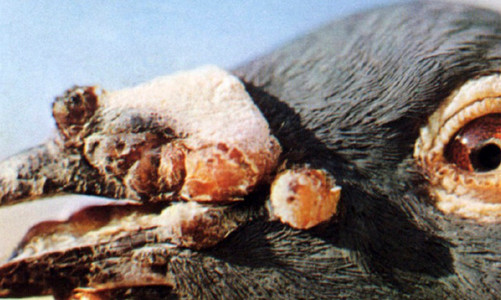Posted by Jerry Gagne on Jul 24th 2019
Pigeon Pox
Pigeon Pox is caused by viruses. The typical scabby incrustations on the outer skin (pox) have given the
disease its name. Pox viruses are excreted in the saliva, the nasal secretions and the lacrimal fluid, but
are hardly ever seen in the droppings. They are transmitted via the beak with infected feed or drinking
water, or by contact with dust containing the viruses.
Secretions of the virus-excreting pigeons drip on the loft floor, become dry and are whirled up by the
movement of the pigeons. Because pecking, particularly about the wattle (Bare Skin on head) it is
possible that a pigeon from an infected loft carries the Virus but does not contract the disease, although
it may infect other birds. The infection is also passed on by insect bites.
The pox is usually a young bird disease, but adults do, on occasion, contract the virus.
Actual treatment of the pox is not possible. Since no substance is known with which the virus in the
pigeon body can be combated, attempts are made to control secondary bacterial infections by giving
products containing antibiotics (Spectinomycin, Chlortetracycline or Myconsan-t.)

